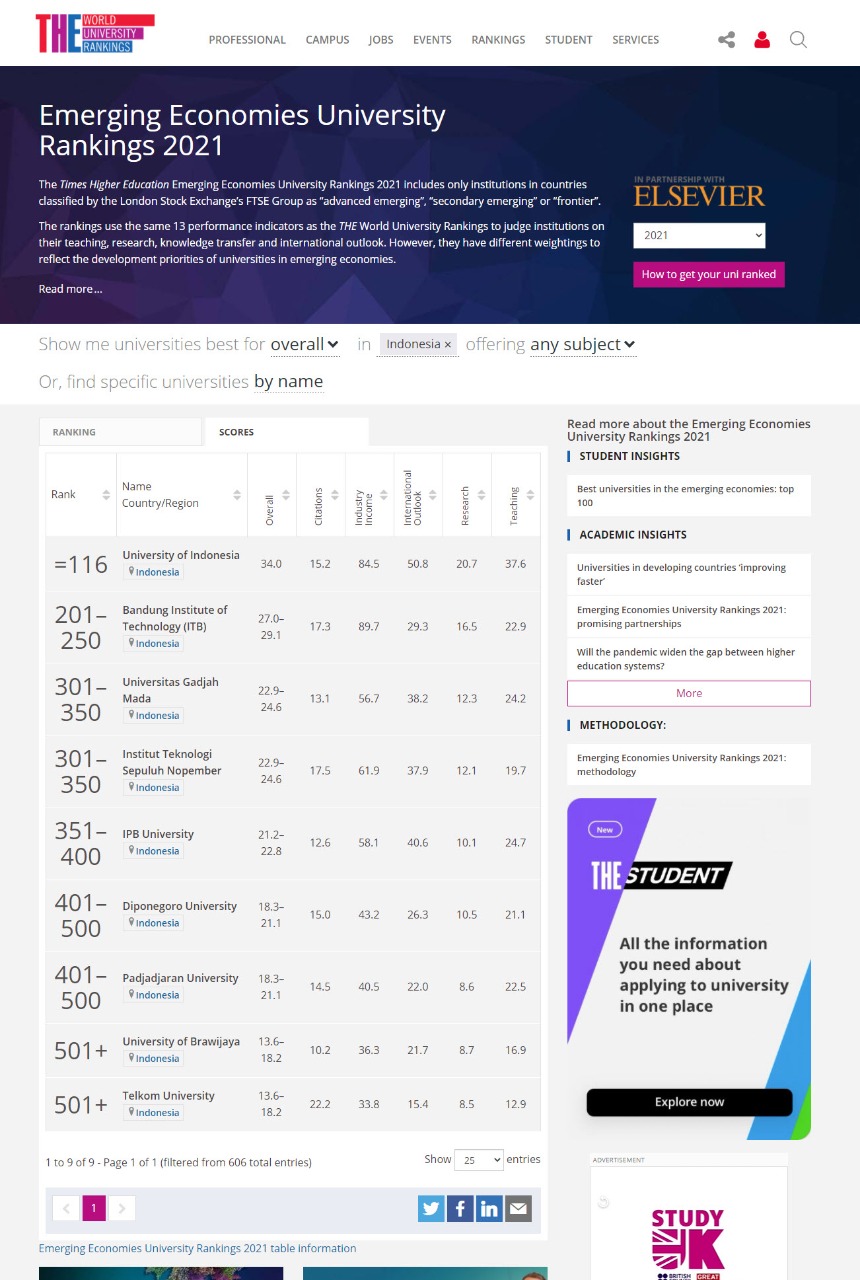SEMARANG – The Times Higher Emerging Economies University Rankings 2021 was the only global ranking agency which conducted the university assessment by carrying out an intensive research across all the core missions of the higher education. This time, THE WUR Emerging Economies University Rankings 2021 would only do the assessment towards institutions in countries which were classified by the London Stock Exchange FTSE Group as “advanced emerging”, “secondary emerging” or “frontier”.
There were only 9 universities that made it into the ranking with the following order: Universitas Indonesia, Institut Teknologi Bandung, Universitas Gadjah Mada , Institute Teknologi Sepuluh Nopember, Institut Pertanian Bogor, Universitas Diponegoro, Universitas Padjajaran, University Brawijaya and Universitas Telkom. Based on the ranking released on Wednesday (10/3/2021), UNDIP was in the 401-500 ranking category.
Responding to the results of the ranking, UNDIP’s Rector, Prof. Dr. Yos Johan Utama SH, M.Hum, emphasized that whatever was achieved, it must encourage us for an evaluation and improvement. “We evaluate what is lacking, and continue to improve what we have done. We must not stop trying, ”said Prof. Yos Johan, Thursday (11/3/2021).
He reminded that the achievement of an institution was the result of the collective work. Solidarity was the keyword, including however we facing the limitations due to the Covid-19 pandemic. “In the midst of the existing limitations, we are grateful for what we can achieve now,” Yos Johan added.
The ranking of THE World University Ranking 2021 used 13 performance indicators, the same as the previous ranking. The indicators used to assess the institutions include their teaching, research, knowledge transfer, and their international engagement. However, they had different weights to reflect the development priorities of the universities in the developing countries.
The performance indicators were grouped into five areas: Teaching (learning environment, infrastructure that were available to support the teachers and students); Research (research reputation as rated by the researchers, research productivity, managed research funds); Citation (level of research influence); International work (number of teachers, international students and research collaborations with foreign campuses); as well as knowledge transfer for industry. Aomng these five fields, the teaching and research were given the same and highest scores, namely 30% each.
This year, Elsevier supplied the data to assess the level of the influence of the research undertaken. A total of 86 million citations from 13.6 million journal articles, seminar proceedings, books, during the last five years were assessed. Overall data was obtained from more than 24,000 academic journals indexed by the Elsevier Scopus.
An assessment was also carried out on the university’s ability to assist the business / industry world in their innovation, discovery and consultancy. This was known from the amount of the income received by the universities for conducting the research from the business world compared to the number of the academic staff.





0 Comments